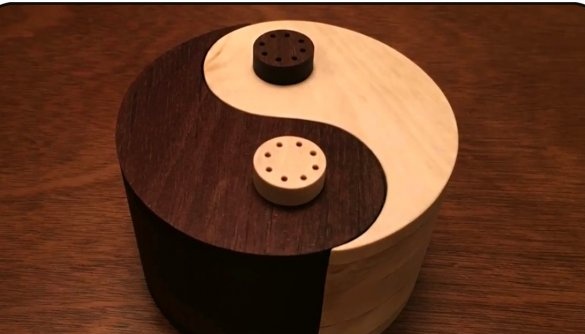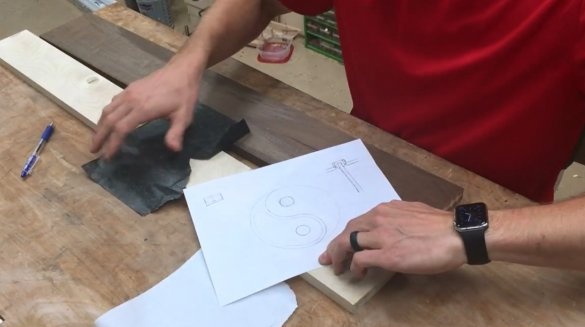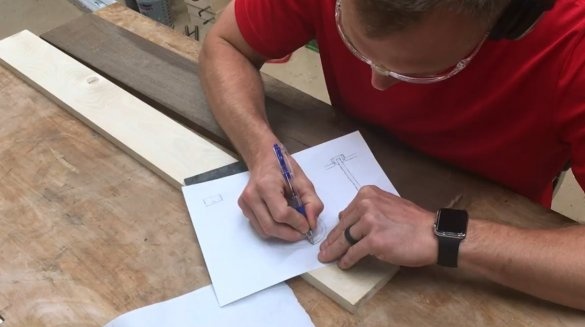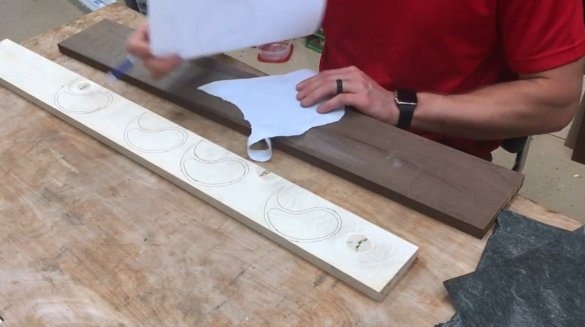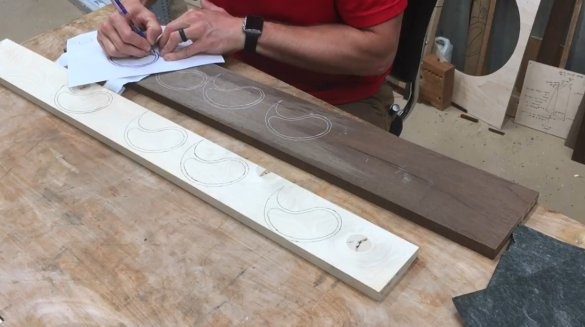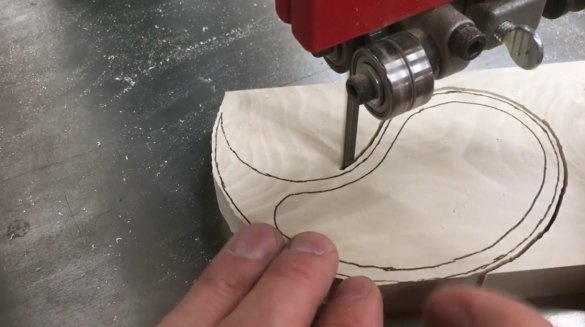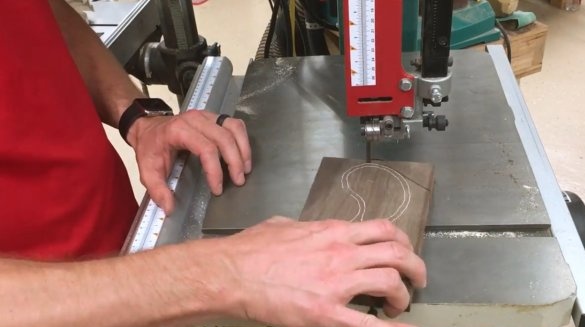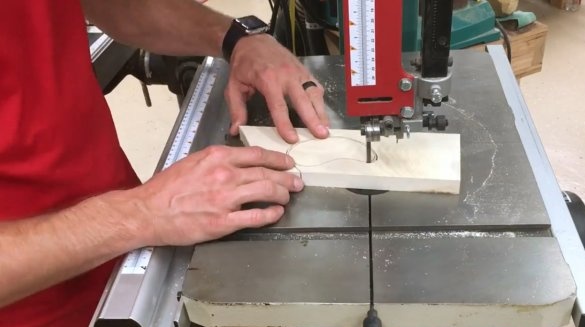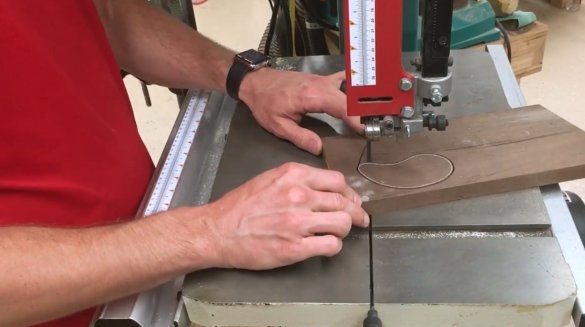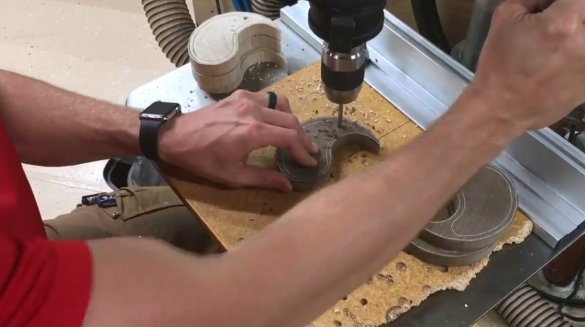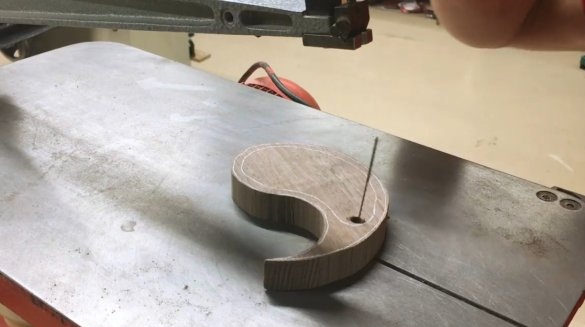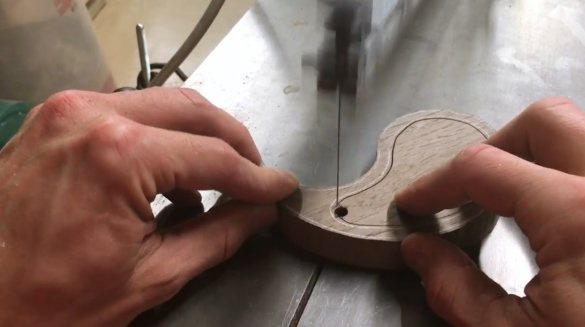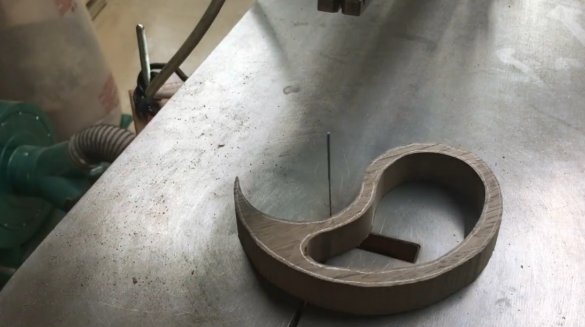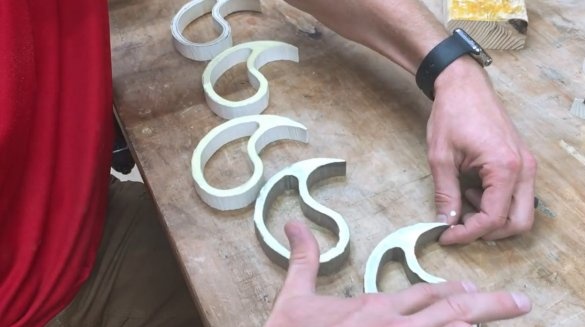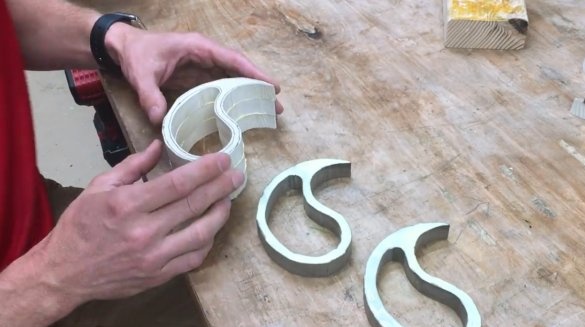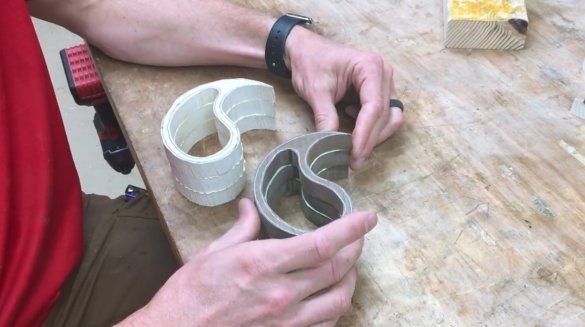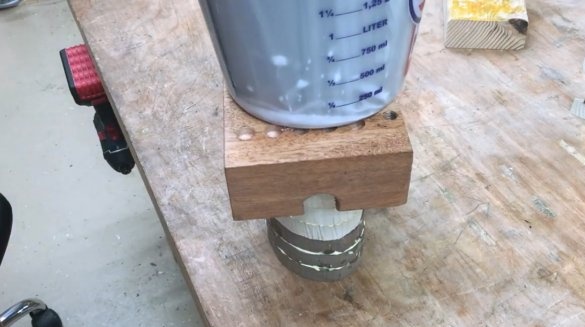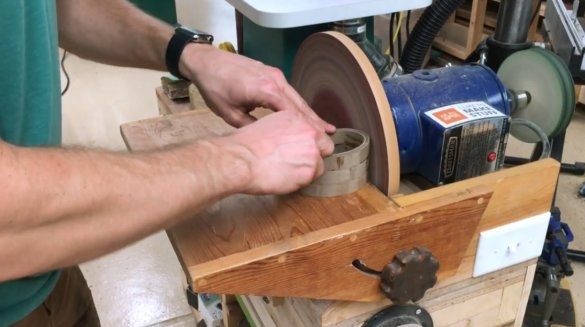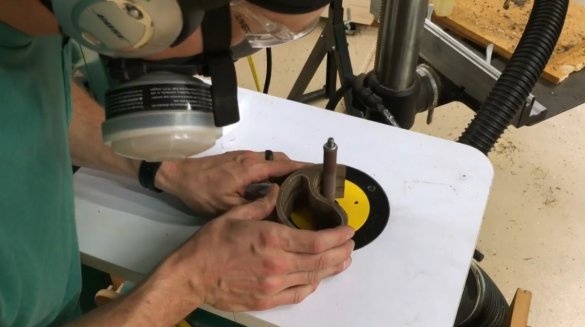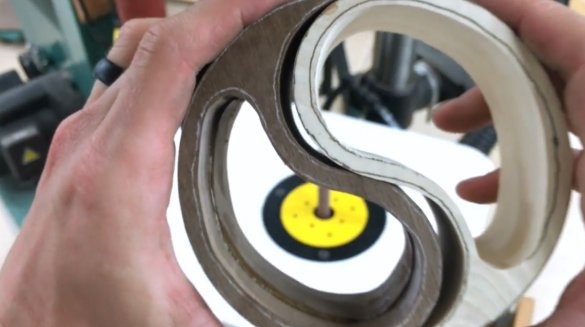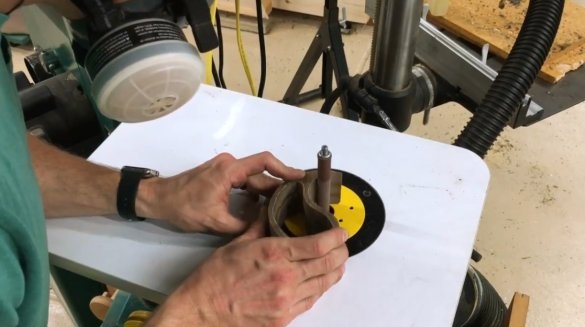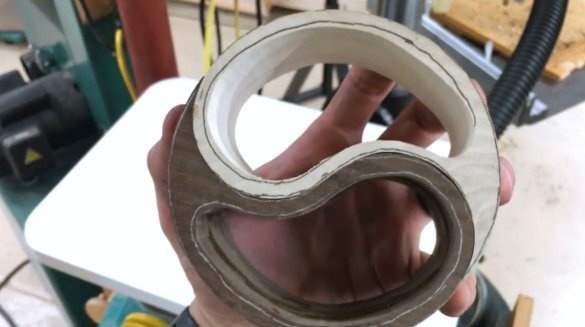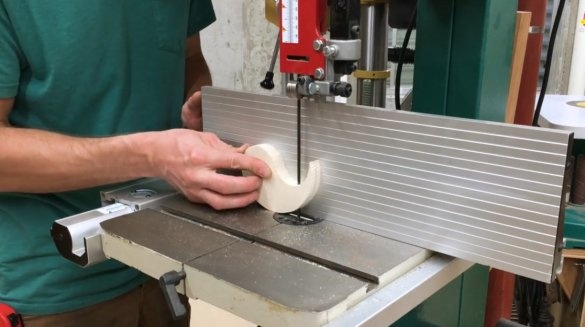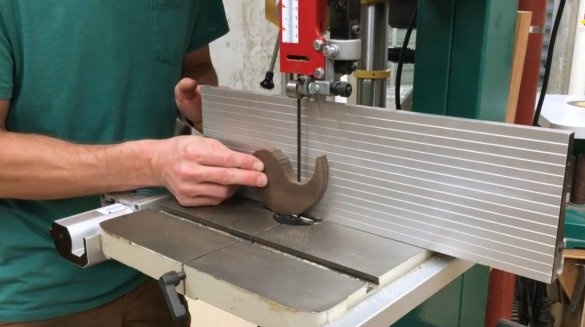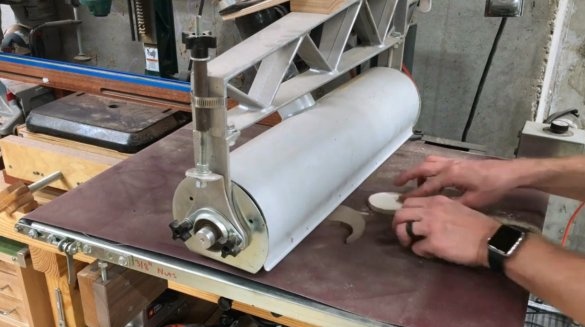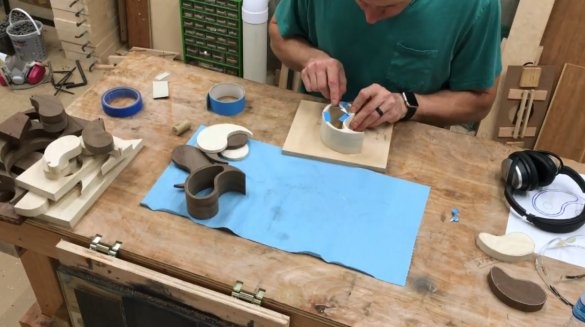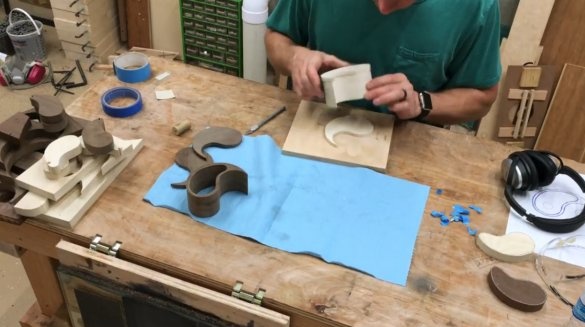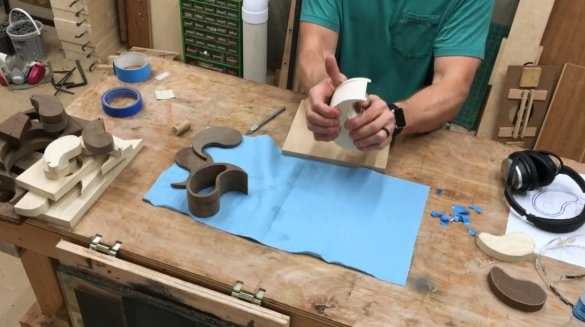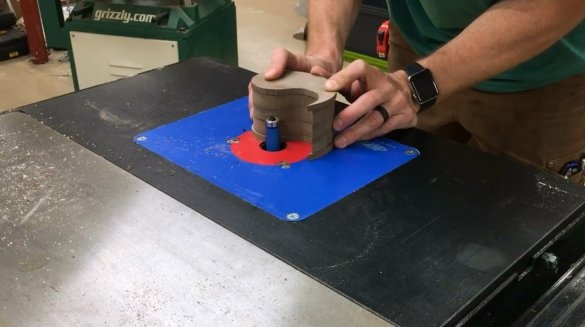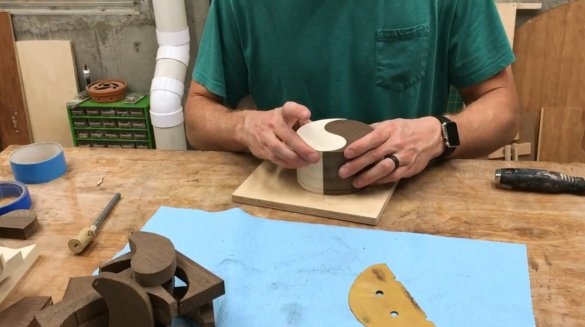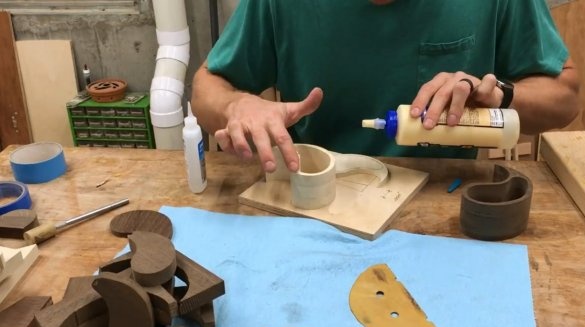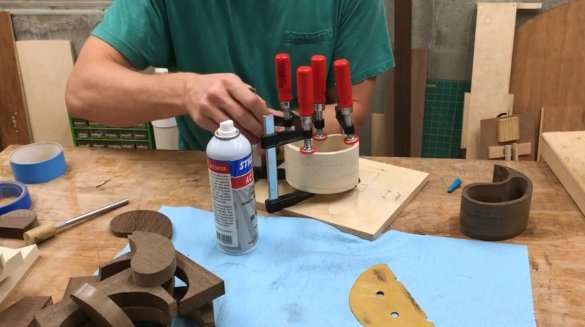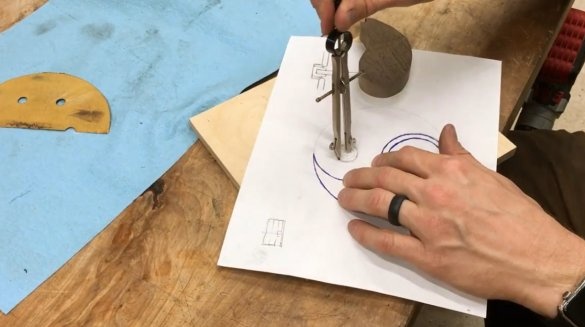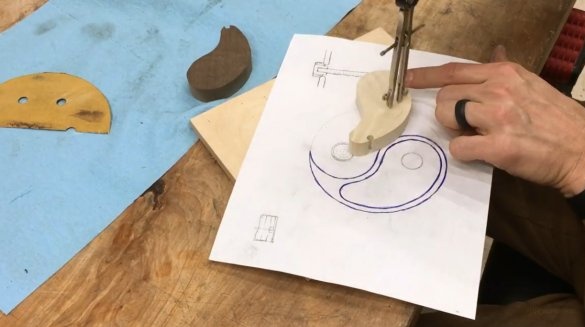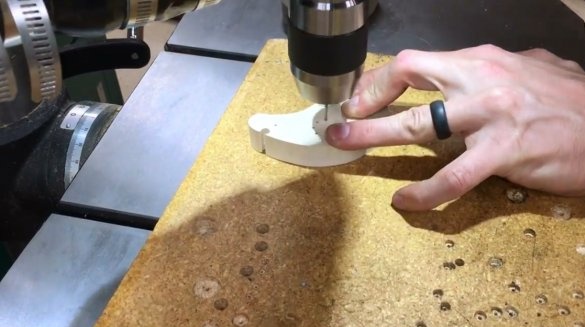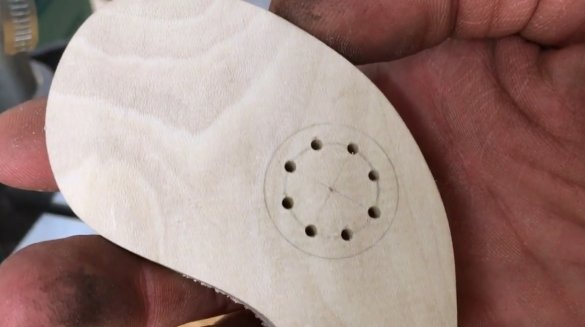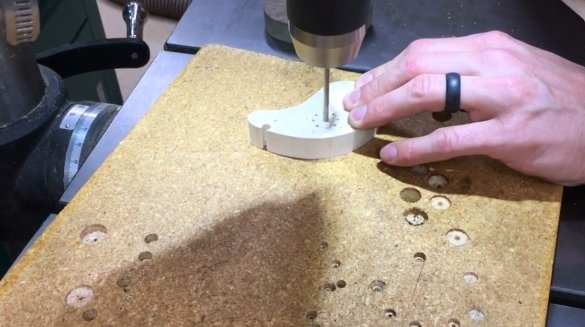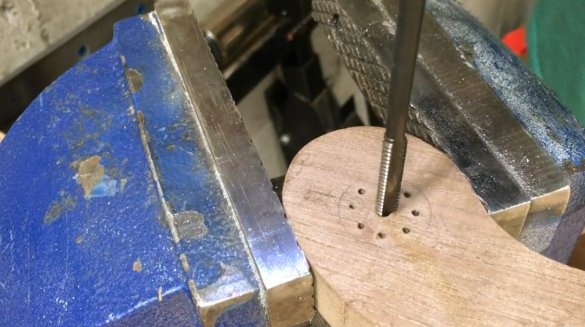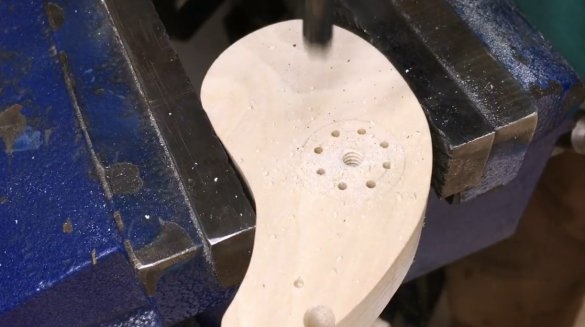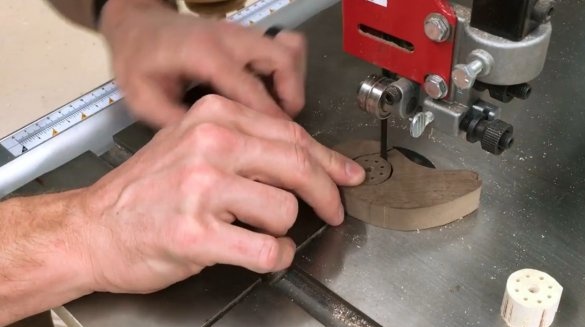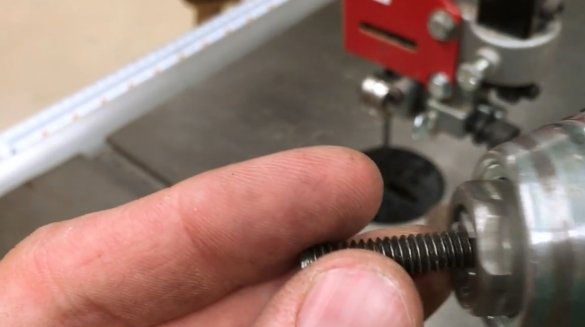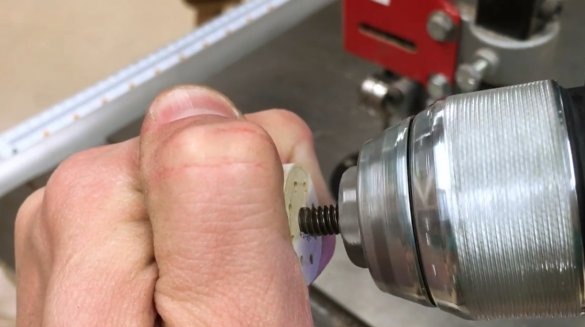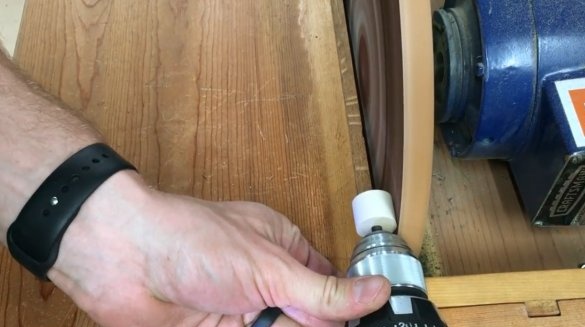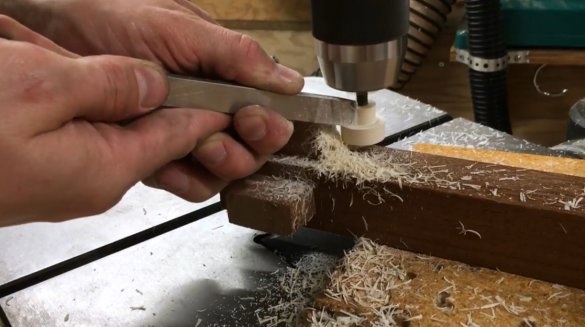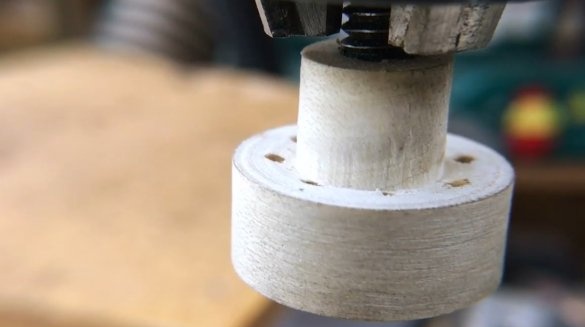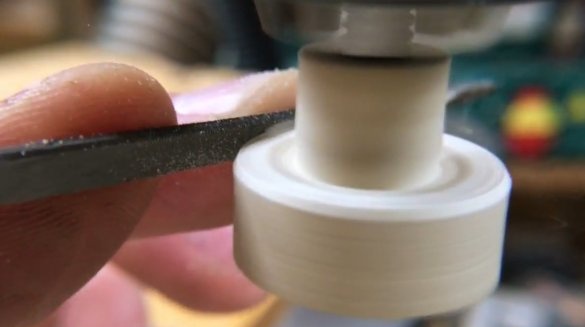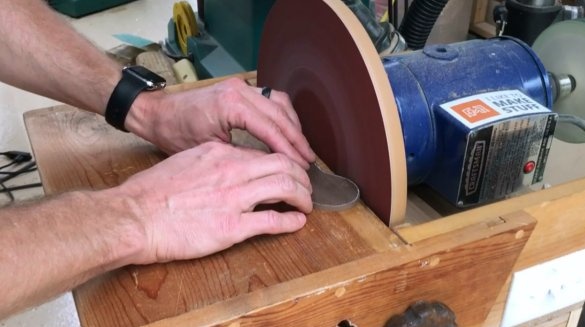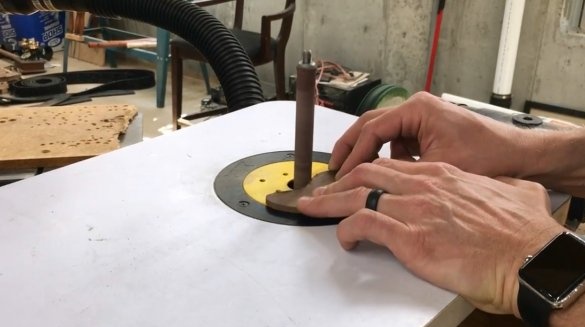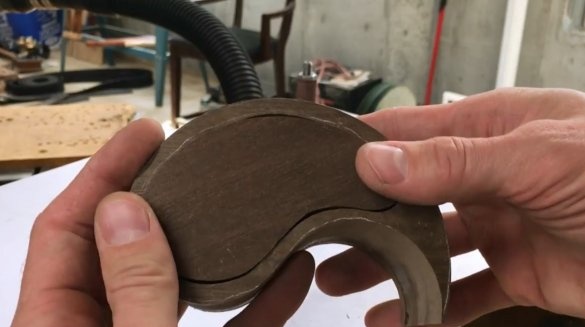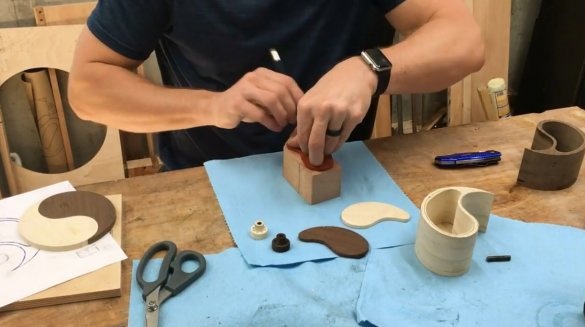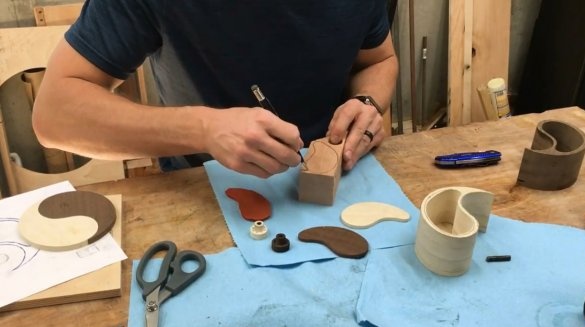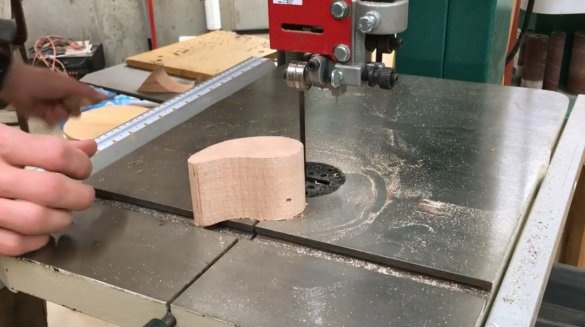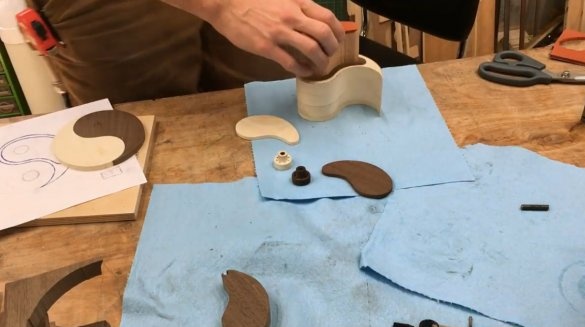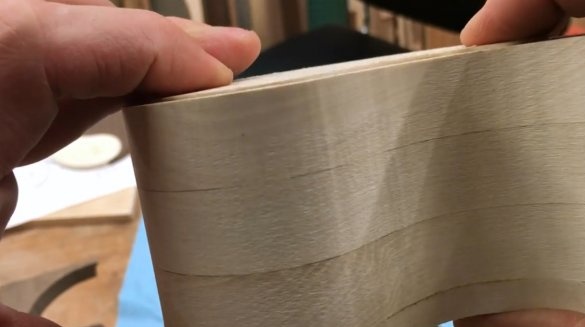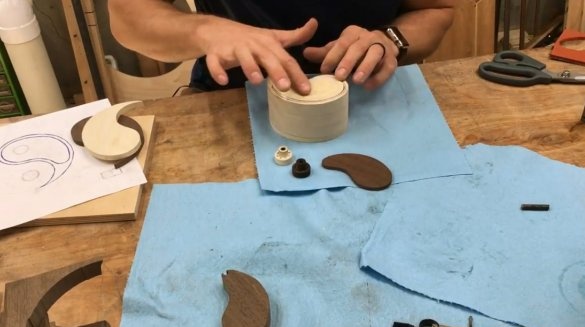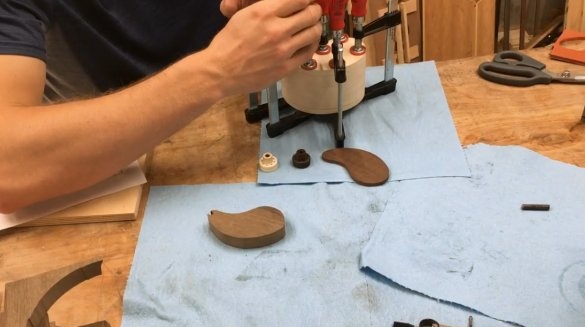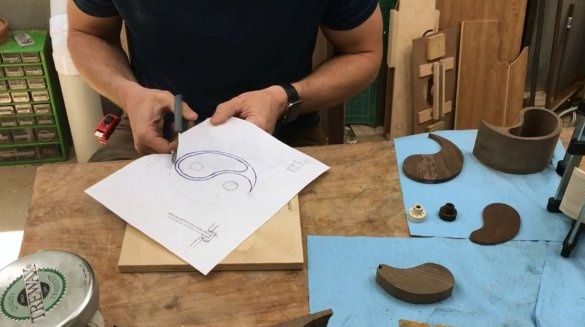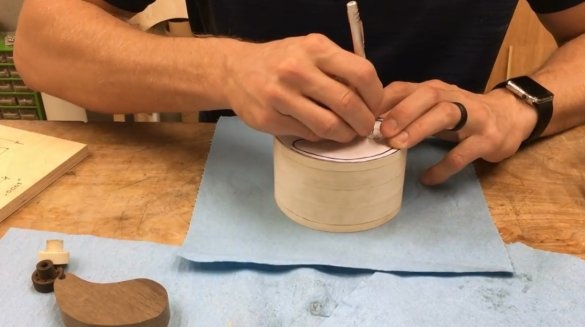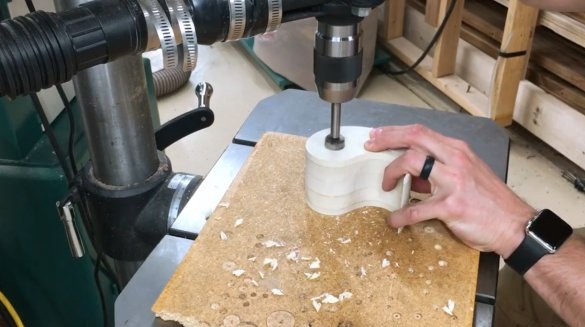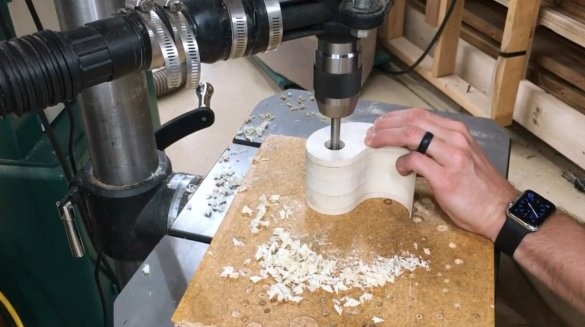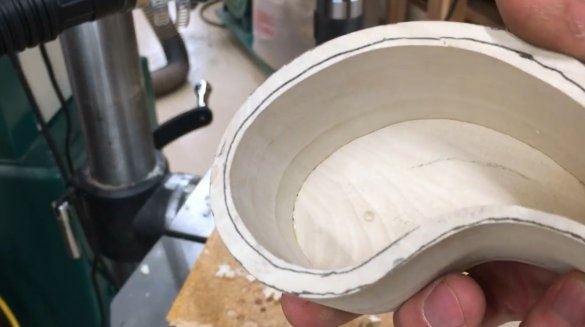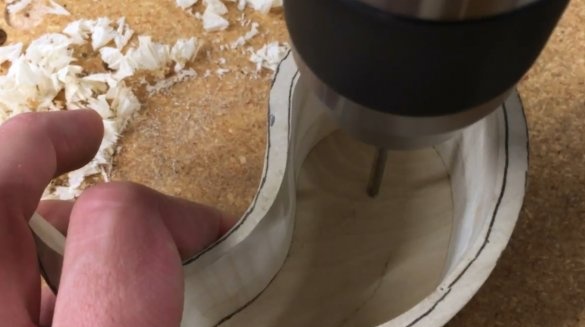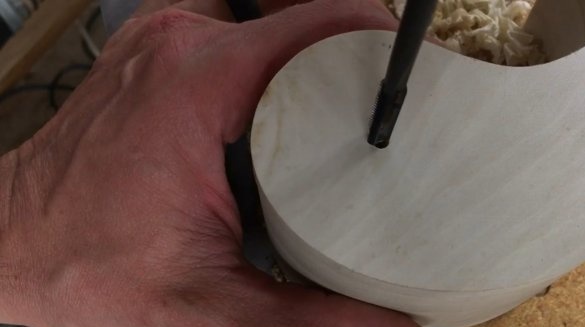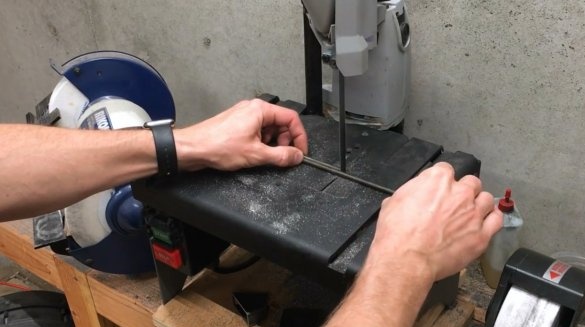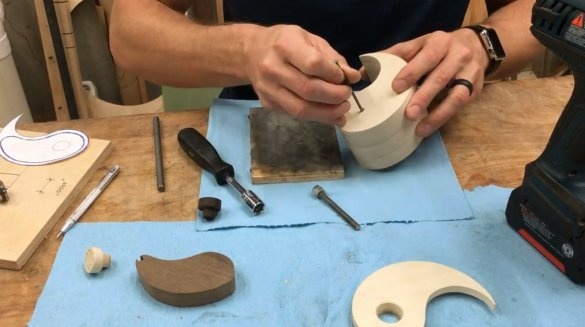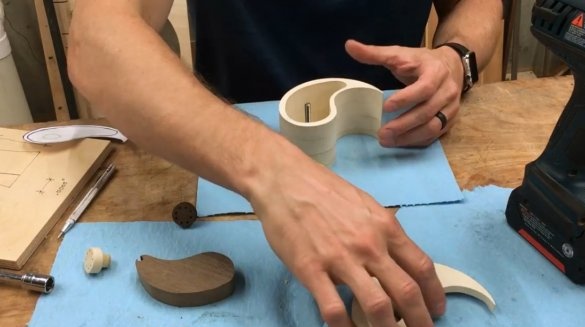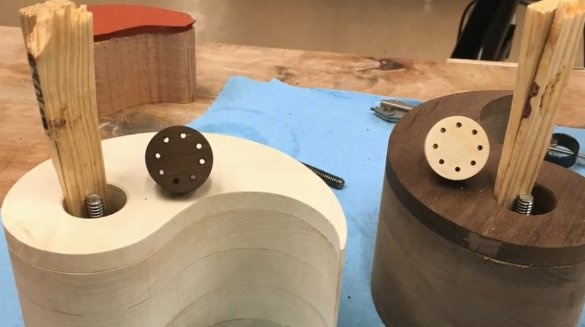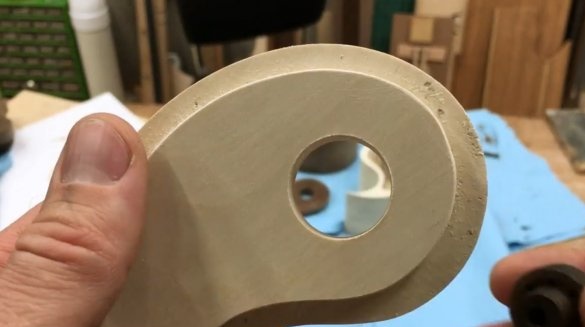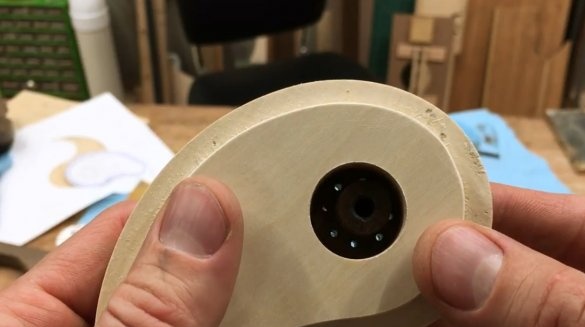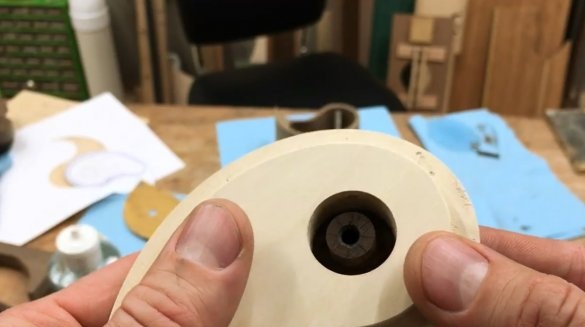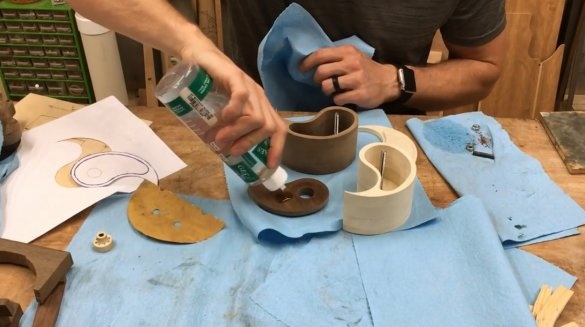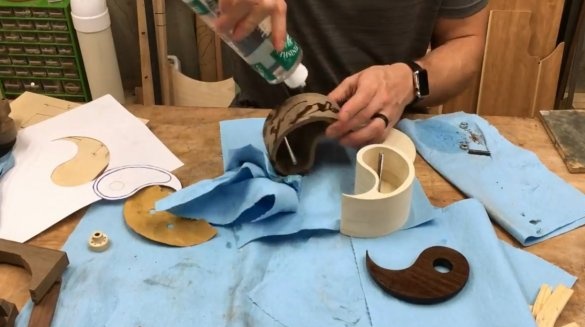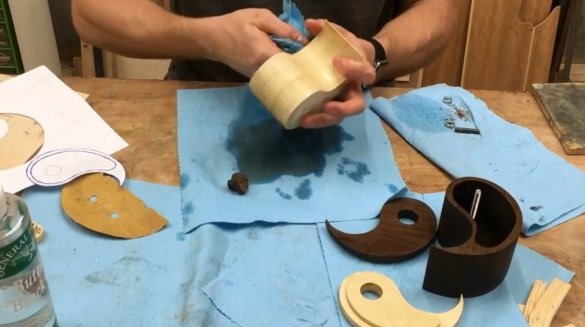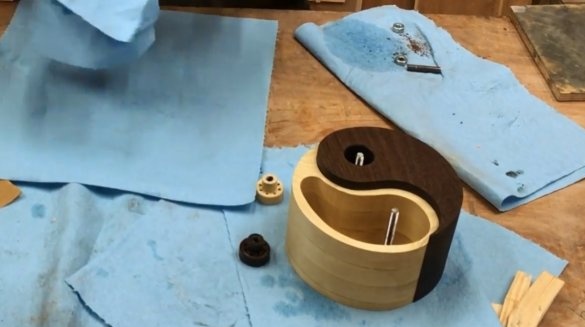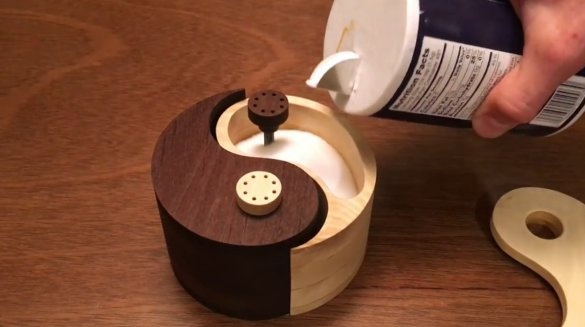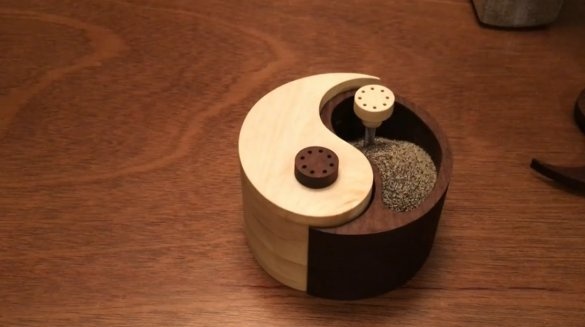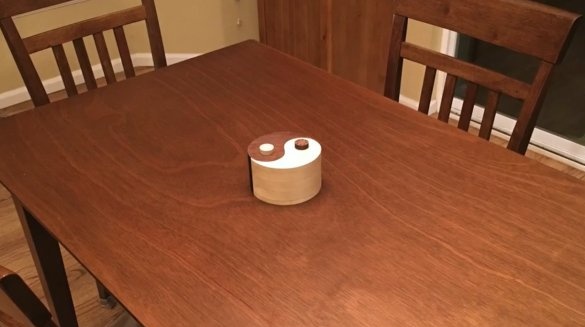Surely each of you loves interior items that look very unusual, and at first glance it is sometimes impossible to determine what it is.
In this article, Andrew Klein, the YouTube channel’s author, will tell you the secret of how he made an unusual zen-style salt shaker and pepper shaker. As a basis, he took the symbol "yin yang."
Materials
- Rosewood and hazel boards
- Two-component second glue
- M4 stainless steel pin
- Two-component epoxy resin
- tracing paper
-
- Double-sided tape.
Instruments, used by the author.
-
-
- Reysmus
- Jigsaw
- tap
- Drum sander
-
- Orbital sander
-
-
-
- Drilling machine
- Chisels
- Ruler, compass, pencil.
Manufacturing process.
So, the author printed the yin yang symbol on the printer. Now he transfers the contours of the drawing to the board with the help of white and black tracing paper.
Then cuts the blanks for the walls of the body on a band saw.
Also prepares parts for the bottom of the lid.
In the inner corners of the workpieces, a hole is drilled for the entrance of the jigsaw blade.
The inner part of the blanks is cut out on a pendulum jigsaw.
Coats the elements of the sides with glue, and collects them in packages.
Then presses both workpieces with a load for gluing.
After the glue dries, it processes the internal and external sides with grinding machines.
From the first time, the adjustment did not work, I had to repeat the procedure on a drum grinding machine.
The two remaining blanks are for the lid and bottom. The master cuts them along on a tape machine, and passes through a surface gage.
Now, using double-sided tape, glues the lid and bottom to the main part of the body.
Customizes their sizes with a thrust bearing mill.
Now both boxes, the lid and the bottom match perfectly.
Glues bottoms using two-component second glue. First, it applies glue, and after connecting the parts it sprinkles with a hardener and fixes it with clamps.
Using a compass, it transfers to the workpiece the size of the desired radius of the insert sieve.
Drills holes "strainer". It is important to select a drill larger than the particle size of salt and pepper.
In the center, drills a hole, and cuts a thread in it. So the plug will be attached to the box, and hold the lid.
Now you can cut the blank blanks.
But in such a simple way, the author adjusts the diameter to the ideal.
Now clamps the workpiece in the drill chuck, and grinds the bottom of the plug. The edge slightly smooths the file.
Grinds workpieces for the bottom of the lid.
In order to accurately adhere the lower part to the lid, the author cut a piece of felt according to its size. A bar is slightly lower than the inside of the box.
Adjusts the bar to the shape of the inside of the box.
He puts felt on it, and inserts it inside. So the bottom of the lid is pressed firmly against the top. She protrudes slightly above the edges.
Lubricates parts with glue, closes the lid, aligns it, and clamps with clamps.
It transfers the marking for the hole to the cover from the drawing.
A Forstner drill makes a through hole in the lid, and slightly rests against the bottom. So he gets a mark for drilling.
At the bottom, drills a hole for the studs, and cuts the thread in it.
It cuts off two hairpins of the required length, and screw them into the bottom of the boxes, having previously lubricated it with epoxy resin.
He opened with wedges, and aligned the studs in the center of the hole.
And so it looks like a lid with a cork from the bottom.
The last step remains - soak all the details with linseed oil.
Everything is ready, you can fill the containers with salt, pepper, and tighten the cork.
Thanks to the author for the original idea of the cutlery!
All good mood, good luck, and interesting ideas!

